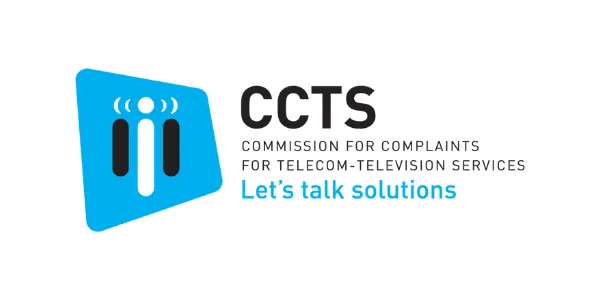
My phone bill unexpectedly included $300 in data roaming charges while I was travelling overseas. Can they do that?
The shock of a phone bill much larger than you expected can be stressful. If you’ve received an incorrect or unusually high phone bill, here are steps to dispute it.
What you should know
If you receive a surprisingly high phone bill, the first thing to do is look at the bill line by line. Have you bought extra services, dialled premium-rate numbers, or been hit with roaming charges?
Check with others in your household. Did they use your phone or piggyback on a shared plan to incur extra charges?
If this is your first bill, be aware that there are typically monthly add-on fees with any cellphone service. Each month a system access fee, a 911 service fee, and taxes will appear on your bill. You’ll also be charged for any minutes, texts, or data you used over and above what your monthly plan covers. And your bill will include fees for options you used that aren’t included in the base price of your plan.
What are roaming charges?
"Roaming charges" may apply when you travel and use your cellphone outside your service provider’s network area. You may “roam” onto the network of another provider. This most often happens if you’re traveling outside Canada.
Roaming charges apply to voice calls, text messages, picture messages, and data you receive or send when you’re roaming. You can incur roaming charges simply by leaving your phone turned on while travelling outside your home network — some smartphone apps automatically send and receive data even if it doesn’t look like your phone is doing anything.
Roaming is generally not included in phone plans, and roaming rates are typically high. Most providers offer roaming packages or add-ons you can buy before you travel.
There are options outside of your cell plan for roaming
If you don’t want to pay to roam, consider an eSIM. There are certain apps that enable you to download a country-specific digital SIM card to your device that comes with data. These cost a fraction of typical roaming charges offered by Canadian providers.
Your provider must notify you when your device is roaming
Under the Wireless Code, a mandatory code of conduct for cellphone service providers, your provider must tell you (at no charge) when your device is roaming in another country. If the account holder and device user are different people, the provider must notify both.
In this alert, they must clearly explain what voice, text, and data charges you may incur while roaming. A generic message about roaming fees is not enough.
Your provider must limit data roaming charges when they reach a cap
Your provider must limit data roaming charges when they reach $100 within a single billing period, unless you explicitly agree to pay additional charges.
If you’re on a shared or family plan, only the account holder or some device user the account holder authorized can consent to any additional charges. (The account holder is the person who’s responsible in the contract for paying the bill.)
To be clear: the provider can’t go ahead with additional charges based on a text message from a device user who isn’t authorized to approve those charges.
Any amount that you pay in data roaming fees, whether via a roaming add-on (before use) or via overage fees (after use), counts toward the cap.
The cap on roaming charges applies on a per-account basis
It doesn’t matter how many devices are associated with the account. For example, for a family account with four devices, the cap on data roaming charges is $100 for the account, not $400.
“We got our teen son a phone on our family plan. All was good at first, but then our monthly bill jumped by $200. The next month it was up $300. Then $600. It turns out our provider was sending our son text messages asking if he wanted extra data (at an extra charge). Our son kept texting back ‘yes.’ But I was the one paying the bills! The provider was supposed to get my consent to any additional charges.”
– Steve, Vancouver, BC

Under the Wireless Code, your provider must stop charging overage fees on data when those fees hit $50 within a single billing period, unless you explicitly agree to keep paying additional charges.
If you’re on a shared or family plan, only the account holder or someone they authorize can consent to any additional charges. The account holder is the person who’s responsible in the contract for paying the bill. The account holder can authorize a device user to consent to additional charges.
If the provider sends a text message to a device user who isn’t authorized to consent to additional charges, it doesn’t matter if this user okays the overage charges; it’s not up to this user. It’s up to the account holder.
The cap on data overage charges applies to the whole account, no matter how many devices are on it. For example, for a shared account with four devices, the cap on data overage charges is $50 within a single billing period. Not $200.
If you’re the only person named on a phone bill, the service provider can pursue you for the full amount. It doesn’t matter if you weren’t the one, on your shared plan, who ran up the charges. The service provider isn’t a bounty hunter; you can’t get them to pursue the actual user who ran up the charges if that person isn’t named on the bill. Recovering the money is up to you.
If you’ve signed a joint contract with someone else, you’re both responsible for paying the bill, no matter who used the service.
If a service provider is asking you for payment and your name isn’t on the bill, tell them you’re not a named account holder and you’re not legally responsible for the bill.
If your phone was lost or stolen and someone else runs up a big bill on your phone, you’re probably on the hook for charges that happened before you notified your provider that your phone was missing. Once you notify your provider, they must immediately suspend your service, at no charge. Learn more how charges work if your phone was lost or stolen.
If you’re planning to dispute your bill, remember the meter is still running while you do. If your dispute is unsuccessful, your provider might charge you a late payment fee. Check the terms of your plan.
Consider paying part of your bill
One approach to consider if you plan to dispute a phone bill is to pay the part of the bill that’s not in dispute. This will show goodwill on your part. It may make your provider less likely to impose a late payment charge.
Once your account is past due, if your account exceeds $50 or has been past due for more than two months, your provider can disconnect your service. In most cases your provider has to warn you in writing at least twice before pulling the plug.
Work out the problem
Two things you need to remember when dealing with phone companies: be calm, and be patient. They’ve spent years building and training their customer service reps to deflect complaints and encourage you to give up. Don’t.
Throughout your journey to dispute a phone bill, it’s inevitable you will get frustrated. Just don’t show it. Keeping cool is essential to getting what you want.
Before you call or reach out, be prepared. Read your contract. Understand your rights. Know what you want to get out of this.
You could even discuss the situation with a friend. Ask them how they would word your complaint. Is what you’re asking for reasonable? When you feel wronged, a second opinion (Google and Reddit included) can give you more perspective on what you actually deserve.
If you dealt with somebody in person, go back to that store. Ask to talk to the same rep. Be clear on the outcome you’re seeking. You may not get everything resolved at once, but don’t leave until you feel you’ve made progress.
If you’re calling, keep in mind that the first person you speak with is often just a gatekeeper. Calmly describe the problem and what you want. If you’re not getting anywhere, politely ask to speak with their manager or the customer-retention department.
Continue to climb the management ladder until you get what you want, or a reasonable compromise. Be persistent.
Some providers have an online chat feature where you can talk to a rep over the web. The same rules apply as in store or over the phone — be calm, be firm, and be resilient!
Throughout your interactions, request specifics about how and when something will be done. Document what was said and by who. Date your notes.
If discussing the situation doesn’t resolve the problem, the next step is to fire off a complaint letter.
The letter should include:
your customer account or reference number
copies of the bill you dispute
why you dispute the bill — say which charges aren’t right
what you have done to try to resolve the problem, including who you spoke with and when
what you want them to do to resolve the problem
Tell them what your next step will be if they won’t make things right. You might say you plan to share your story on social media or to file a formal complaint with the Commission for Complaints for Telecom-television Services.
Give a time frame — say, 10 working days — for them to address the problem.
To help you get started, we have a template letter you can modify to suit your situation. For more inspiration, see our guidance on how to write a demand letter.
Find their corporate address on their website, or call them to get the address. Send the letter by registered mail to ensure they get it.
Keep a copy of your letter.
Consider telling your story on social media. Be factual and truthful about what is in dispute — using foul or insulting language may work against you, and lying can expose you to legal troubles.
Social pressure is powerful. The cellphone provider may be eager to make things right to prove they’re good corporate citizens.
The Commission for Complaints for Telecom-television Services (CCTS) administers the Wireless Code and deals with consumer complaints about cellphone service, including billing issues.
You can file a complaint with the CCTS. You must provide:
specific details of your complaint
the steps you’ve taken to resolve the complaint with your service provider, including their response
what you believe to be a reasonable resolution to your complaint
Be patient — the CCTS receives many complaints, so be gracious with their response time and suggested resolutions.
Common questions
If you get a cellphone as part of a contract, you can’t be billed for wireless services you can’t use while that device is in for repairs under its warranty.
The provider may lend you a cellphone while yours is in for repair. In this case:
you can’t be charged for the borrowed phone
you can still be charged for your regular service
Who can help

Commission for Complaints for Telecom-television Services
CCTS deals with cellphone, TV and internet service complaints.

